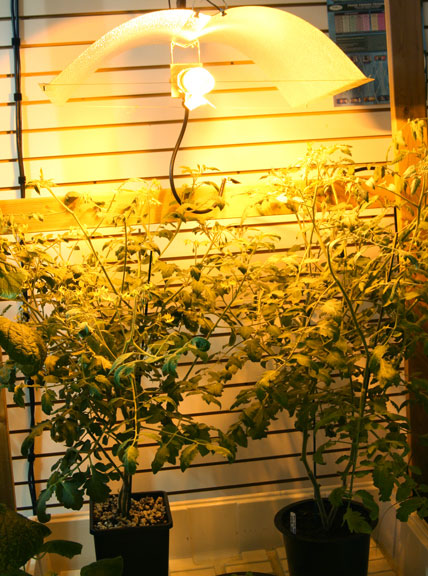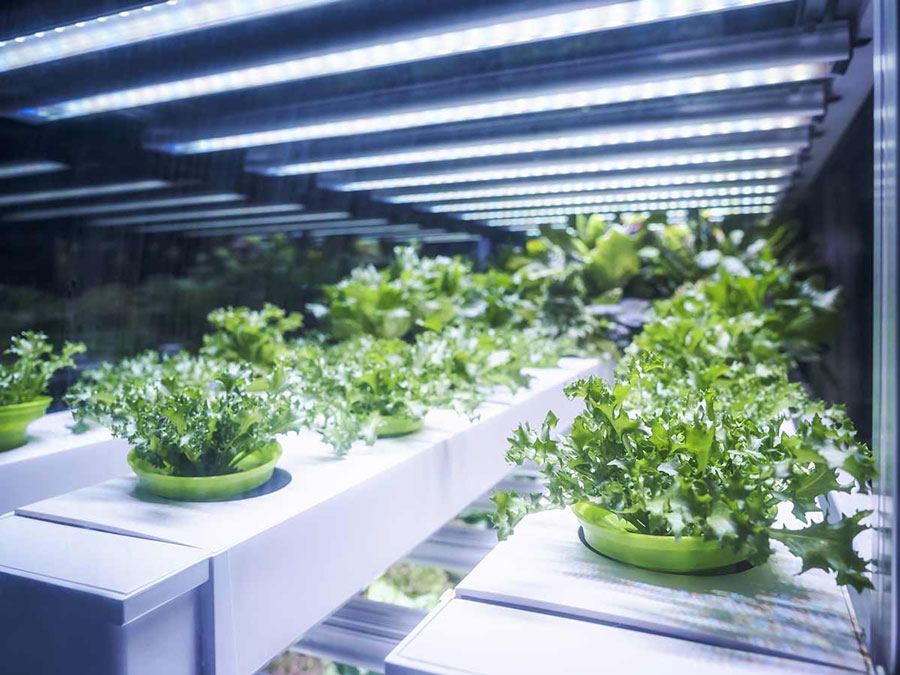Like humans, plants prefer to operate in daylight rather than fumbling around in the dark. And that’s why many flowering species refuse to grow without the necessary 10 hours of daylight to encourage them (onions insist on a lengthier 14 hours).
As a result, don’t expect much growth during November to February. There’s plenty of things to do in November anyway. If you’re growing indoors in a greenhouse or a propagator then you’ll need additional lighting as well as having to pump in more heat (what utility bill increase?!). Incidentally high pressure sodium lighting is believed to be better at encouraging plants to grow indoors than standard fluorescent lights.
Having said that, many gardeners say that it is the length of the darker (night time) periods rather than day light which control the growth of a plant. Well, here in the UK we are currently a month from the Winter Solstice (or shortest day) on December 21. Talking of December and winter, there is also another big problem we face as gardeners in the winter, that doesn’t come from the sunlight hours, however, it’s the winter snow and icy winds.
The more sunlight available to a plant the longer it will potentially grow for. All bulbs used for creating ‘artificial sunlight’ for plant growth have reflective light fittings to derive maximum effect.
The strength of the bulb is measured in kelvins with 5,600 kelvins equivalent to natural day light. A light with a blue tinge indicates a high kelvin rate while red does the opposite.
Different types of lights for plant growing
Fluorescent grow lights. Standard or high output, these tubes come in both cold and warm varieties. The standard lasts for around 10 hours while the high output will go on for double that length of time.
Incandescent growing lights Incandescent grow lights heat up so much they can actually cause the plant to burn if not checked regularly. However, they are excellent for use on a single plan such as a bonsai tree, provided they are at least 24 inches away from the plant.
High Pressure Sodium Grow Lights The most popular type of lighting is the high pressure sodium (HPS) grow light. You’ll find it in both domestic greenhouses and commercial growing industries. It’s also the most energy efficient bulb available on the market at the moment which again, will appeal to plenty of gardeners.

Metal Halide HID Grow Lights More like natural sunlight than any of the other available bulbs, the metal halide (MH) high density discharge grow lights provide bright white light of up to 5,500 Kelvin degrees. You’ll normally find these in supermarkets and other large stores. Those used in gardening are on the warm (red) side of the spectrum and last up to 20,000 hours. You can replicate an incredibly similar to summer rig in your conservatory. Simply get a decent planting setup, quality soil (hopefully partially from the compost and garden bin. You can even setup an automatic watering system in case it’s too cold to go outside.
Potting your Amaryllis
It is, of course, the season for the flowering Amaryllis and we couldn’t go without giving you a few potting tips for this most lovely and fast-growing of plants. The time to pot these bulbs is right now(we use a bulb planter and a few other plant pot accessories including self watering troughs and a quality workbench) and the way to do is to fill a jar with water and leave the bulb in overnight so that by morning some of the water will have soaked through. Next, take the bulb and simply pot it in some dirt and compost, ensuring a third of the bulb is still visible. Now just sit back and watch the flowering magic show…
